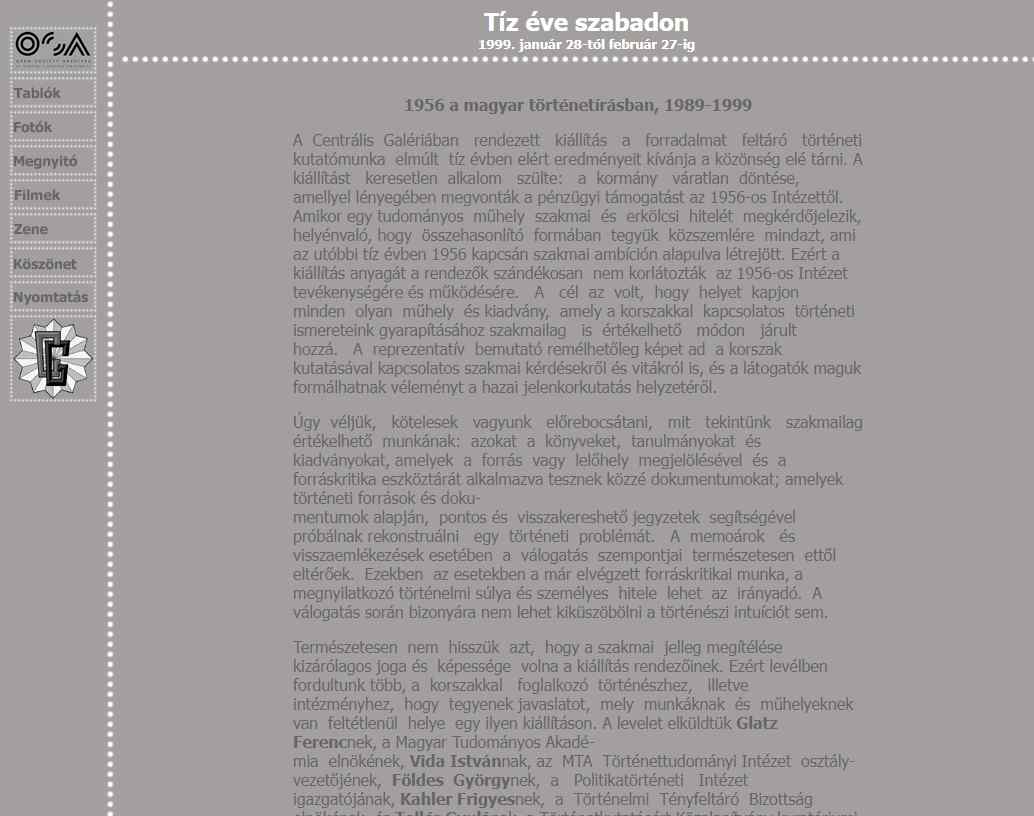Ten Years of Freedom
In Cooperation with the 1956 Institute (ONLINE)

Online version of the exhibition held at the Galeria Centralis (in Hungarian only).
The exhibition is unusual in the sense that instead of exploring a historical event such as 1956, it tries to present the fruits and efforts of such exploration done by various individuals and organizations, without any commentary or interpretation. The exhibition features all 1956-related scientific research work, monographs, studies, bibliographies and source listings by Hungarian authors that were published after 1989. The publications are categorized based on the most commonly occurring topics in the research of this era. The activities and history of individual research centers are also presented, when relevant and necessary.
The exhibition functions as a reading and research room, where visitors can study the printed and electronic literature about the Revolution. The computer database, digitized photo collection, and Oral History Archives database created by the 1956 Institute are available for use on the spot, as well as the Internet-based educational materials and forthcoming CD ROM produced by the Institute. The perusal of these materials are aided by documentaries made in 1956 and segments of films made after 1989 about the historiography of 1956. A few of the most important items in the Oral History Archives are also available for reading—only in copy, of course. Additionally, the exhibit features a computer database of sound documents and programs about 1956 in the Archives of Hungarian Radio. Segments from these broadcasts—including the programs of Radio Free Europe during the Revolution, which are currently being processed—can be listened to at the exhibition.
The online version of the exhibition is available at the following link. (Only in Hungarian)